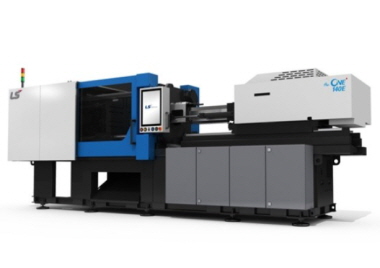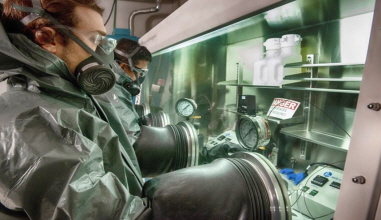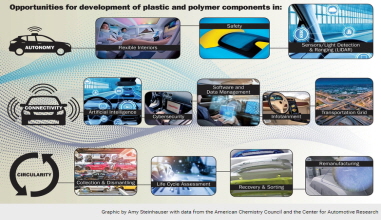Technology & solutions
TPE fills role efficiently in both interior and exterior vehicle parts
작성자 : Aeyoung Park
2018-03-13 |
조회 : 4427
The automotive industry is one of the largest and fastest-growing markets for thermoplastic elastomers (TPE). Used in both interior and exterior applications, these tiny TPE parts make the car“complete”, helping to fulfill the requirements of automakers with efficiency and cost-effectiveness.
are important criteria for window trim profiles.
According to Smithers Rapra’s report, the global TPE market has grown at a compound annual growth rate (CAGR) of 5.4% since 2012 to reach 42.24 million tons in 2017. It is expected to continuing growing at a rate of 5.5% in the next five years, topping 5.5 million tons in 2022.
“The automotive industry, being the most important consumer of TPEs, sets the pace here,” said the report author, Patrick Ellis.
This segment grew at an above average rate of 5.9% for 2012-2017 and reached 1.84 million tons – or 43.4% of the total market in 2017. The prediction for 2022 is a consumption of 2.46 million tons, representing a market share of 44.4% and a CAGR of 6.0%.
Ease of processing for door and window seals
Door and window seals, which require dimensionally stable corner joints and end elements, are usually made with styrene butadiene compounds (SBC) and crosslinked thermoplastic vulcanized (TPV) rubber.
The cost-effectiveness of TPV is limited, however, due to diverse factors in the manufacturing process, in particular the window trim. “The production of diverse sealing frames and window trims of EPDM profiles with molded corner and end elements requires new material solutions,” said Michael Pollmann of Kraiburg TPE.
The core requirements for corner joints and end elements of window trim profiles include strong adhesion and weathering resistance, which are ensured by the long term process stability of the TPE/rubber connection. It is also necessary to minimize the injection temperature of the TPE solutions in order to reduce the cooling and cycle times of the two-component elements.
Kraiburg TPE has developed a new series of compound under its THERMOLAST K family in two-component applications with ethylene propylene diene monomer rubber (EPDM), providing an alternative solution with added values.
In addition to adhesion properties, its AD/EPDM/UV series offers long term resistance to UV radiation and thermal effects with a hardness of 70 Shore A. These compounds exhibit superior stability, so the EPDM profile is neither compressed, nor destroyed or deformed.
This solution is being tested by several Kraiburg customers in the automotive industry. It feature uniform color fastness of EPDM and TPE and there is no tendency of stickiness or phase separation.
“Our tests showed that the cleanliness of the EPDM contact surfaces to the TPE are crucial in these two-component elements and that freshly cut seal profiles result in optimal adhesion,” said Pollmann.
Low VOC solution for interior parts
For automotive interior, minimizing emission of volatile organic compound (VOC) is of utmost importance for automakers. OnFlex LO is PolyOne Corporation’s latest innovation for the automotive industry, reducing VOC by up to 50% versus existing TPEs.
OnFlex LO can be overmolded onto polyolefin substrates using a two-shot injection molding process.“Consumer concerns and industry regulations have made vehicle interior air quality a major focus for automotive manufacturers,” said Woonkeat Moh, General Manager, GLS Thermoplastic Elastomers Asia and Specialty Engineered Materials Asia for PolyOne.
Suitable for numerous components, including HVAC seals, buttons, controls, coin trays and drink holder mats, OnFlex LO can be overmolded onto polyolefin substrates using a two-shot injection molding process.
PolyOne tested OnFlex LO TPE against its existing TPEs according to VDA 278 standard for VOCs and fog, and VDA 270 standard for odor. Results showed OnFlex LO TPE cut VOC emissions by approximately 50% and fog emissions by 40%, while maintaining outstanding low odor performance.
“Our new material will play an important role in minimizing further off-gassing of chemicals to help automakers create a healthier, more enjoyable vehicle environment,” stated Michelle Hearn, Director of Global Marketing, PolyOne.
At Fakuma 2017, Hexpol TPE highlighted its expanded product portfolio for a number of applications. Among them is its Dryflex TPE for automotive interior applications such as floor mats, cup holder liners, fascia mats and HVAC components.
The Dryflex TPEs display low fogging and low odor performance, including grades with results ≤3 in odor standards such as VDA 270. According to gravimetric fogging standard DIN 75201 they have condensate <2mg and in thermal desorption analysis VDA 278 they achieve VOC results <500µg/g and Fog <1,500µg/g.
Source: China Plastic & Rubber Journal




















